In: the covert collective

Samuel St-Aubin
February 15, 2022Samuel St-Aubin × × Spaghetti by Samuel St-Aubin “I like rice. Rice is great if you’re hungry, and you want to... Read More

Xiaojing Yan
February 1, 2022Stepping into an exhibition by artist Barry Ace is a transformative experience. The bold colour palette, the textural combination of materials, and the meticulous attention to detail quickly captivates you. The entanglements of these elements reveal unique narratives that change the lens through which we see others. Suzanne Luke offers some thoughts on the art an ideas of Barry Ace in this article.
Read More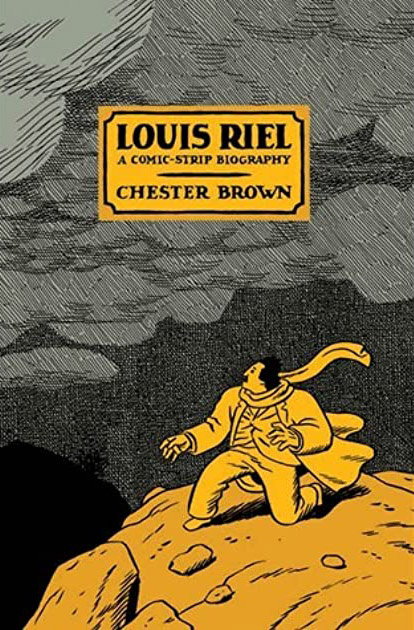
Louis Riel | Chester Brown, 1999 – 2003
February 23, 2022Louis Riel | Chester Brown, 1999 – 2003
Drawn & Quarterly, 2003
It seems an appropriate time to revisit Chester Brown’s excellent graphic novel Louis Riel (A Comic – Strip Biography), with Louis Riel Day having recently passed. I also say this not just due to recent domestic terrorism in Ottawa, but also as when I was living in Saskatoon, with a statue of Riel’s ally Gabriel Dumont prominently installed near the South Saskatchewan River, the reality of contested narratives about history was necessary to consider. An ongoing debate in Niagara, about a statue of a soldier glorifying the North-West Rebellion being removed from St. Catharines city hall, indicates this isn’t solely a regional concern.
More to this point: an exhibition at the now defunct Mendel Art Gallery a few years ago, on the work of James Henderson, displayed a full scale portrait of the judge who presided over Riel’s ‘trial’, where his execution was a foregone conclusion, and this fact was – still – not particularly welcomed when imparted to various tours and visitors.
“Chester Brown reinvents the comic-book medium to create the critically acclaimed historical biography Louis Riel, winning the Harvey Awards for best writing and best graphic novel for his compelling, meticulous, and dispassionate retelling of the charismatic, and perhaps insane, nineteenth-century Métis leader. Brown coolly documents with dramatic subtlety the violent rebellion on the Canadian prairie led by Riel, who some regard a martyr who died in the name of freedom, while others consider him a treacherous murderer.” (from here)
One of many fine publications from Drawn & Quarterly, this is one of a number of Brown’s excellent comics, and has been cited, along with Jeff Lemire (with his anthology Essex County) as an example of how ‘comics’ in Canada are engaging with historical narratives that are very relevant today.
Minimalist in format, this text fills in gaps that many of us were left with, studying history in school. Several years ago, in conversation with people from various parts of Canada, it was telling that Riel had been demonized in some historical accounts, completely ignored in others and given a more honest treatment in others. It’s an overused quote, but seems apt here : My people will sleep for one hundred years, but when they awake, it will be the artists who give them their spirit back. (Riel, as cited in The Defiant Imagination : Why Culture Matters (2004) by Max Wyman)
Louis Riel was the first comic book to receive a grant from the Canada Council for the Arts and has won three Harvey Awards.
A preview can be seen here and it can be purchased from Drawn & Quarterly, if you can’t find a copy at your local library. ~ Bart Gazzola
Read More
The Museum of Everything: Volume #4 – You’re Not Only Human
January 24, 2022The Museum of Everything: Volume #4 – You’re Not Only Human
Everything Ltd/The Museum of Everything
The Museum of Everything
I have collected a lot of catalogues over the years. Some for shows I’ve visited in person, and some for shows I simply wish I had visited. In 2013, I visited the Venice Biennale. It was pure serendipity that the inspiration (and title) for the 2012 iteration, curated by Massimiliano Gioni, was The Encyclopedic Palace: the concept first patented in 1955 by self-taught artist, Marino Auriti, of an imaginary museum “meant to house all worldly knowledge, bringing together the greatest discoveries of the human race, from the wheel to the satellite.”
Having focused a great deal on ‘outsider art’ during my Masters degree, I was bonkers thrilled to be able to see an exhibition carrying this much weight on the international level, blurring the lines between self taught and academic artists. Aside from the spectacle that was the main exhibition, one of the greatest finds for me was a tiny little pavilion set up outside by The Museum of Everything. Wandering through their set up of reproductions of work by Carlo Zinelli, mounted on pillars, I ended up at their bookstore/gift shop and found one of my most prized possessions to this day.
The Museum of Everything was launched by James Brett in Britain in 2010, and has quickly grown into an institution celebrating who they refer to as, “untrained, unintentional, undiscovered and unclassifiable artists of modern times”. This particular catalogue documents their fourth exhibition, which was presented at Selfridges, London from September 1 – October 25, 2011. The exhibition presented over 500 artists, including the first UK retrospective of Judith Scott – a personal heroine of art-making. The catalogue includes 225 pages of full colour works, organized into categories of studios. Prior to this catalogue, I had been aware of some of the more well known studios/organizations/institutions, like Creative Growth, Gugging and Creativity Explored, but the index provided me with a blueprint for places I would grow to research more, to study, to acquire works from, and to include in exhibitions I dreamt up. Each section includes reproductions of works, alongside statements by the studios they were created in, and cursory descriptions of the artists’ general oeuvre. The catalogue almost becomes a collection of manifestos of support for those creating outside of the academic tradition.
Included in the boxed set is The Appendix of Everything, featuring interviews with heavy hitters like Cindy Sherman, Massimiliano Gioni, David Byrne, and revered director of White Columns, Matthew Higgs. The collection of conversations is informal, accessible, and honest. Many quotes have stuck with me to this day. One in particular, was Higgs’ description of what he felt when he first encountered Creative Growth. “Art was being made for reasons that remained out of reach”. For me, this is the art I’ve developed a tidal wave of emotional reaction to. I look through this catalogue regularly, finding patterns, similarities, moments of clarity, and moments of joy.
You can acquire this catalogue by visiting the Museum of Everything’s website. Also note that there are now 7 catalogues for exhibitions curated by the Museum. ~ Lisa Kehler
Read More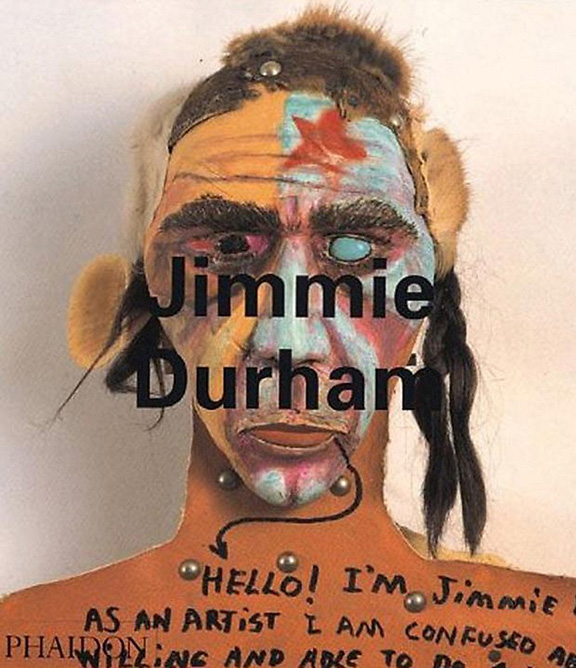
Jimmie Durham
January 21, 2022Jimmie Durham
Essays by Laura Mulvey, Dirk Snauwaert, Mark Alice Durant, Kate Nesin
240 illustrations
London: Phaidon, 1995
Jimmie Durham (1940 – 2021) passed away last year, and it’s an appropriate time to consider his legacy and his art. This book from Phaidon was originally published nearly two decades ago, and has been reissued recently, with some updates and further considerations about the artist, his work, and the controversy that suffused his practice, especially around his claims of Cherokee descent.
From Library Thing: “Jimmie Durham is an internationally acclaimed artist, writer and poet of [alleged] Cherokee descent. His intricate sculptures and installations mimic the attributes of human beings and animals, and the ways they make or are made into history. Durham collages discarded objects and fragments of organic matter, transforming them with dazzling colour into startling, anthropomorphic configurations. His ersatz ethnographic displays deliver ironic assaults on the colonizing procedures of Western culture. An activist in the American Indian movement during the 1970s, he has also published poetry, fiction and critical theory. Featured at Documenta 9 (1992), his work has also been exhibited at the Whitney Museum of American Art, New York, and the Institute of Contemporary Arts, London. The Survey by British film and art critic Laura Mulvey, author of ‘Visual Pleasure and Narrative Cinema’ and other influential essays, explores themes of history and language, space and time in Durham’s work. Belgian curator Dirk Snauwaert talks with the artist about his multi-faceted practice. In the Focus, Mark Alice Durant, US performance artist and writer, analyzes Durham’s diary of Shakespeare’s Caliban. For Artist’s Choice, Durham has selected texts by Italo Calvino about the loss of speech and the poetry of the invisible. Artist’s Writings include essays, poems and a screenplay published here for the first time.”
Durham is a very contested figure, and his artwork falls within that narrative, too. The exhibition Jimmie Durham: At the Center of the World came to the newly opened Remai Modern in Saskatoon, Saskatchewan, Canada, in 2018 – at the same time that his claims of Cherokee heritage were being hotly contested. As one of the first shows in that gallery, in a place that has often been referred to as the ‘Alabama’ of Canada for its systematic racism, it fired a number of arguments (not the least of which spilled back on some of the critics of Durham, who are associated with the University of Saskatchewan, perhaps as projection from their own issues with institutional racism and attempting to appropriate Indigenous identity to further exploit those communities). At the Center of the World could be seen as the spark that lit that situation, which is still burning….
I cite that to show how Durham’s aesthetic and ideas merit a re examination as they engage with experiences and histories that are being played out in numerous sites around Canada, if not the world, and this book (considering with Durham’s recent passing that readers might contemplate Durham’s life as a whole) allows for his life and legacy to be considered in a more ‘complete’ manner.
I’m familiar with the original edition of the book, but there is an updated edition, from Phaidon, which you can see more about here. ~ Bart Gazzola
Read More
Les Femmes Photographes De La nouvelle Vision En France 1920-1940 | Christian Bouqueret, 1998
January 13, 2022Les Femmes Photographes
De La nouvelle Vision En France 1920-1940 | Christian Bouqueret, 1998
Nicéphore Niépce Museum (Chalon-sur-Saône, Saône-et-Loire); Museum of Art, History and Archeology (Evreux); French Mission of photographic heritage; French association for the dissemination of photographic heritage.
This is the accompanying text to the exhibition Women photographers of the new vision in France, 1920-1940, which was on display in numerous places in France, including Paris (Hôtel de Sully, April 3-June 7, 1998), Chalon-sur-Saône (Musée Nicéphore Niépce, June 19-September 13, 1998) and Evreux, Musée of the old Bishop’s Palace, October-November 1998).
The artists in this show and the book are an impressive group of photographers whose works are still groundbreaking and evocative, almost a century later. These include Berenice Abbott, Laure Guillot, Denise Bellon, Ilse Bing, Germaine Krull, Dora Maar, Lee Miller, Claude Cahun, Lisette Model, Marianne Breslauer, Yvonne Chevalier, Nora Dumas, Gertrude Fehr, Gisèle Freund, Florence Henri, Annelise Kretschmer, Ergy Landau, Juliette Lasserre, Thérèse Le Prat, Dora Kallmus / Madame d’Ora, Rogi André, Ré Soupault, Gerda Taro and Camilla “Ylla” Koffler.
Bouqueret’s writing is in French, but the images are – of course – the real joy of this book. After reading it, I spent endless hours online, looking for more works by these artists. Research is too formal a word, as these photographs pulled me into a different time, and it was a way, again, in which the availability of artists’ works online is a treasure.
In light of that, I must also recommend this site: AWARE (Archive of Women Artists, Research and Exhibitions), as they have many images and information about the artists featured by Bouqueret, and much more.
It can be ordered online here, though I acquired a copy through my local library. ~ Bart Gazzola
Read More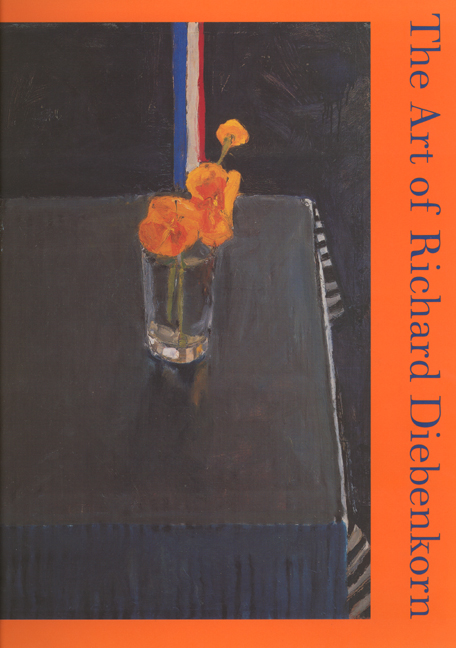
The Art of Richard Diebenkorn
December 18, 2021The Art of Richard Diebenkorn, 1997
Jane Livingston, with essays from John Elderfield and Ruth Fine (The University of California Press)
Forgive me for saying something positive about social media, but it’s allowed for a proliferation of art and images online (which is one of the motivating factors that helped create the Covert Collective); the art historian in me welcomes this, as on Twitter, for example, there’s numerous ‘art bots’ that have filled the sphere with many fine artworks – such as those of Richard Diebenkorn.
“Recognized as a major figure in postwar American painting, Richard Diebenkorn (1922-1993) was an artist strongly identified with California but whose work is beloved throughout the United States and the rest of the world. This catalog is the most comprehensive volume on the artist now available.
Jane Livingston’s extensively researched biographical essay covers Diebenkorn’s entire career and concentrates on the artist’s inner life and purposes as revealed in his paintings. Ruth Fine deals primarily with the figurative aspect of Diebenkorn’s work (1955-67), and John Elderfield concentrates on the Ocean Park period (1967-93). All three authors provide valuable insights based on their personal relationships with the artist and his widow, Phyllis. On both page and canvas, the reader can sense Diebenkorn’s complexity and highly self-conscious working methods, as well as his formidable integrity.
The Art of Richard Diebenkorn will give readers with an interest in all phases of modernism new thoughts about the relationship between abstraction and representation. Stunningly illustrated, with 192 full-color reproductions, this book is an exhilarating testament to a distinctive American artist.” (from the publisher, The University of California Press)
The essays are enjoyable and informative: but the majority of the book is defined by almost 200 full-colour reproductions and that’s why I recommend this book. From Diebenkorn’s still life paintings to his rough portraits to his ephemeral repeated meditations where place and abstraction intersect, this book is rife with beautiful images. “If painting doesn’t offer a way to dream and create emotions, then it’s not worth it”, to quote Pierre Soulages, a contemporary to Diebenkorn, and one can easily get lost among the many images of Diebenkorn’s in this book
This is hopefully to be found at your library (UC Press offers a space to request a copy for the same), or your locally owned bookstore. Since I mentioned social media in this Library suggestion, it would be remiss to not offer links to a Richard Diebenkorn #artbot on Twitter, as a teaser to encourage you to seek out this book.
~ Bart Gazzola
Read More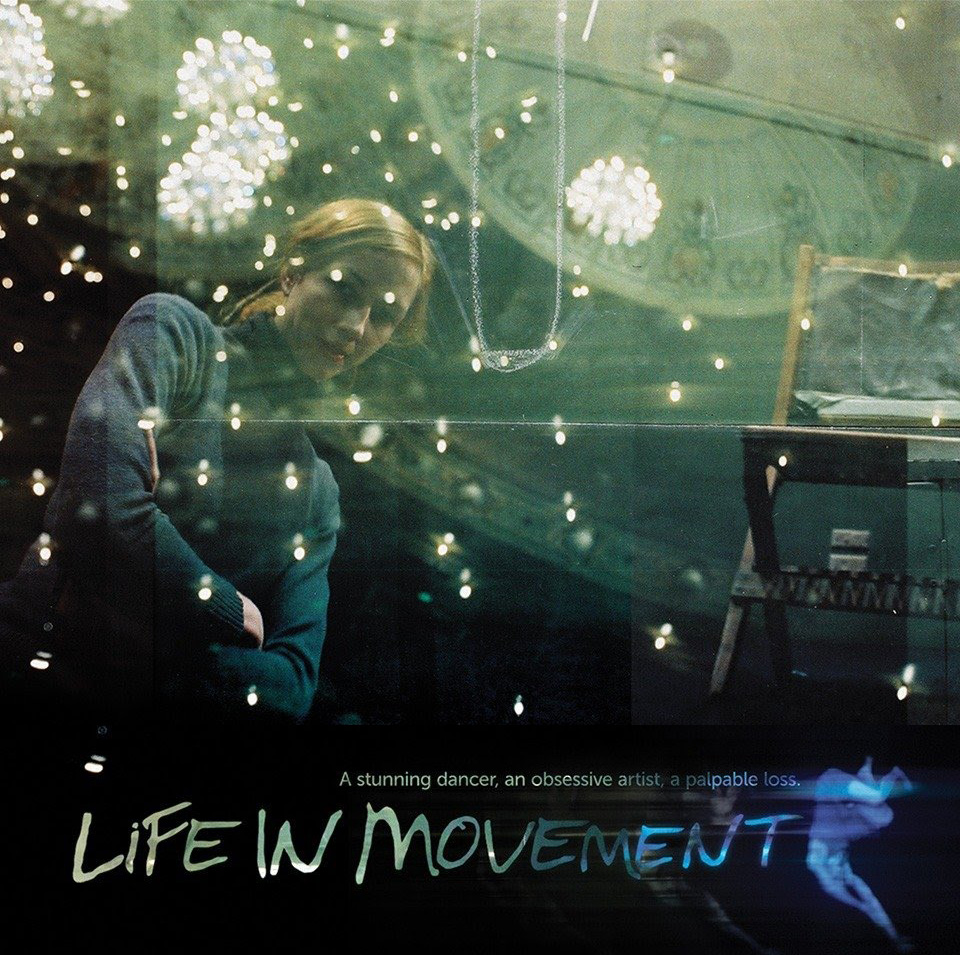
Life In Movement – The Tanya Liedtke story
November 8, 2021Life In Movement
2011
Closer Productions
I have 3 ½ left feet. As a sometimes musician I have a great sense of rhythm, but it has never been able to translate into my limbs. As a pre-teen and adolescent, I never knew anyone taking dance classes, never attended any recitals or ballets or other artistic events involving dance… in short, I am the last person you might think who would offer up Closer Productions’ Life In Movement as a documentary film that made such a difference in my artistic practice.
The multi-award-winning film focuses on Tanja Liedtke, the late choreographer of the Sydney Dance Company, who was killed at age 29 before she could take her position. A lauded professional dancer, Life in Movement documents Liedtke’s intentional cultivation of a creative life and her near obsessive process. The dance sequences she created seem to defy physics; she would push her dancers to their breaking points yet pushed herself even further.
Watching the film made me question my own motives as an artist. Liedtke was “all-in” to an extent that I could not emulate as a musician. My passion for photography was/is a completely different animal, and I poured everything I had into it. Life in Movement helped me to focus my intent and my path forward.
The documentary will bring joy, sadness, admiration and reflection to any artist who watches. It is NOT available for streaming in Canada but you can purchase a copy from the Closer Productions website. ~ Mark Walton
Read More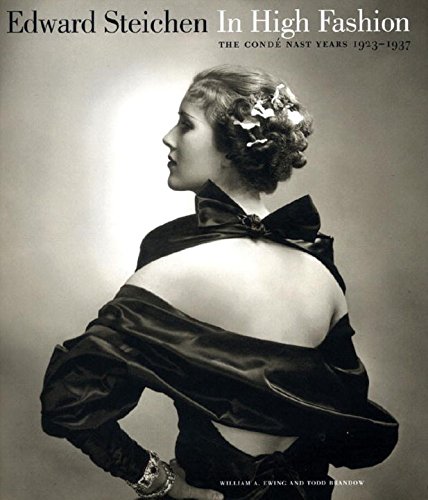
Edward Steichen – In High Fashion, The Conde Nast Years 1923-1937
September 28, 2021Edward Steichen: In High Fashion, The Conde Nast Years 1923-1937
by Todd Brandow (Author), William A. Ewing
W. W. Norton & Company
To anyone with even a smattering of knowledge of photographic history, Edward Steichen stands as a giant. He, along with Alfred Steiglitz, helped to solidify the medium’s standing as a fine art form, and embellish his own reputation in the process.
Much to the chagrin of Steiglitz and the other purists, Steichen had the audacity to construct a lucrative career for himself, as evidenced by the book Edward Steichen: In High Fashion, The Conde Nast Years 1923-1937, and became the pre-eminent photographer of fashion and celebrity culture.
I was very lucky to see the show for which this book serves as the catalogue at The Art Gallery of Ontario… actually I was lucky enough to practically LIVE at the gallery as I wore out my membership card poring over these stunning images again and again. Steichen DEFINED fashion photography as we know it, taking the work of Baron de Meyer (and others) from the end of the Belle Époque and perfecting it.
One can stare at “On George Baher’s Yacht” and “Screenwriter Anita Loos, C. 1928“ and marvel at their fluid tonality. You can see evidence of Steichen’s work to this day as photographers continue to mimic the poses and backgrounds used by him.
~ Mark Walton
Read More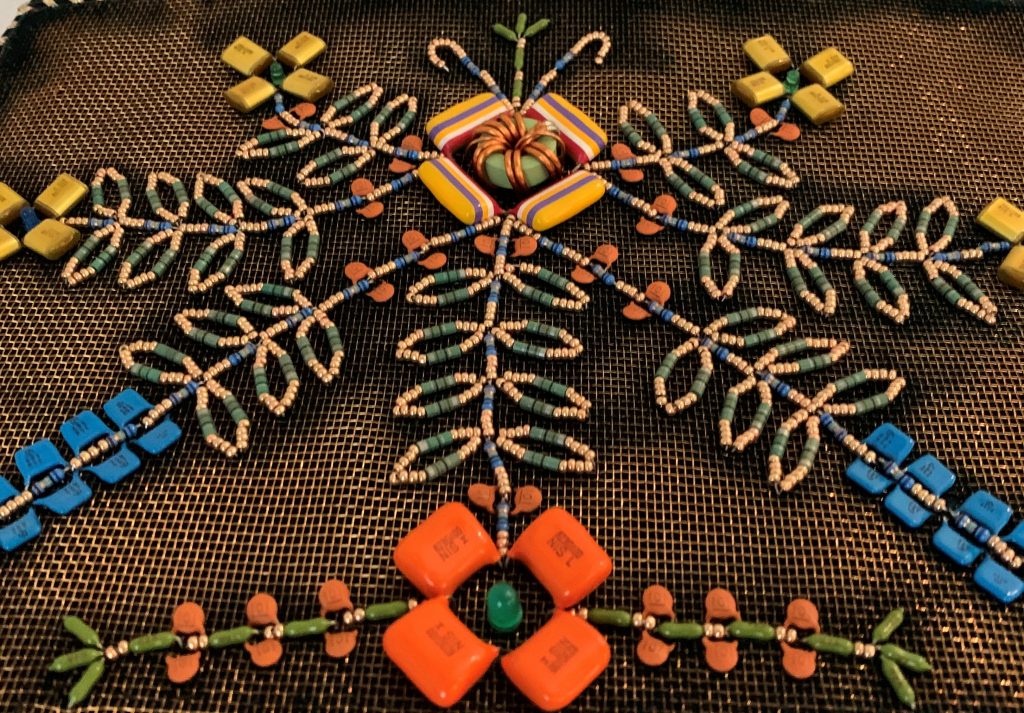
Barry Ace
October 15, 2021Stepping into an exhibition by artist Barry Ace is a transformative experience. The bold colour palette, the textural combination of materials, and the meticulous attention to detail quickly captivates you. The entanglements of these elements reveal unique narratives that change the lens through which we see others. Suzanne Luke offers some thoughts on the art an ideas of Barry Ace in this article.
Read More
Recent Comments